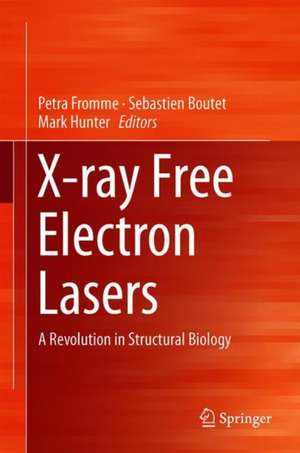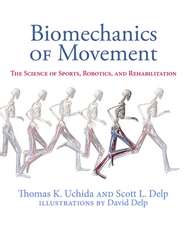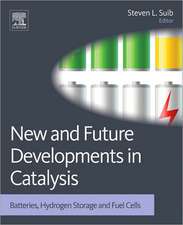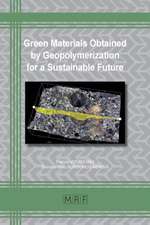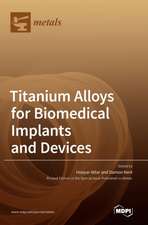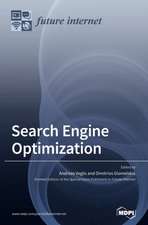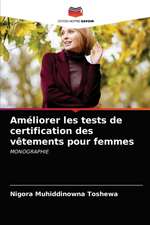X-ray Free Electron Lasers: A Revolution in Structural Biology
Editat de Sébastien Boutet, Petra Fromme, Mark S. Hunteren Limba Engleză Hardback – 10 ian 2019
Preț: 890.39 lei
Preț vechi: 1085.84 lei
-18% Nou
Puncte Express: 1336
Preț estimativ în valută:
170.45€ • 175.30$ • 141.41£
170.45€ • 175.30$ • 141.41£
Carte tipărită la comandă
Livrare economică 17 februarie-03 martie
Preluare comenzi: 021 569.72.76
Specificații
ISBN-13: 9783030005504
ISBN-10: 303000550X
Pagini: 482
Ilustrații: XVI, 479 p. 128 illus., 108 illus. in color.
Dimensiuni: 155 x 235 mm
Greutate: 0.87 kg
Ediția:1st ed. 2018
Editura: Springer International Publishing
Colecția Springer
Locul publicării:Cham, Switzerland
ISBN-10: 303000550X
Pagini: 482
Ilustrații: XVI, 479 p. 128 illus., 108 illus. in color.
Dimensiuni: 155 x 235 mm
Greutate: 0.87 kg
Ediția:1st ed. 2018
Editura: Springer International Publishing
Colecția Springer
Locul publicării:Cham, Switzerland
Cuprins
X-ray Free Electron Lasers and their applications.- Serial Femtosecond Crystallography (SFX): An Overview.- Small is Beautiful: Growth and Detection of Nanocrystals.- The lipid cubic phase as a medium for the growth of membrane protein microcrystals.- Sample Delivery Techniques for Serial Crystallography.- When diffraction stops and destruction begins.- Climbing the data mountain: processing of SFX data.- Phasing XFEL serial crystallography data.- Structure Determination by Continuous Diffraction from Imperfect Crystals.- Advances in structure determination of G protein-coupled receptors by SFX.- Time-resolved serial femtosecond crystallography, towards molecular movies of biomolecules in action.- Towards Molecular Movies of Enzymes.- X-ray Spectroscopy with XFELs.- Single molecule imaging using X-ray free electron lasers.- The use of angular correlations to extract 3-dimensional structural information from X-ray solution scattering.- Future Directions of High Repetition Rate X-rayFree Electron Lasers.- Index.
Notă biografică
Petra Fromme, Ph.D. is a Regents’ Professor, and Director of the Biodesign Center for Applied Structural Discovery at Arizona State University. After receiving a Ph.D. in chemistry from the Technical University of Berlin her research career has focused on unravelling the structure and function of photosystem I and II proteins and ATP synthase. She was an integral part of the team who developed the technique of serial femtosecond nanocrystallography for analyzing proteins using high-intensity X-ray Free Electron Lasers (XFEL). With over 200 articles she is a leader in photosynthesis, protein macromolecular crystallography using synchrotrons and protein nanocrystallography using XFELs.
Sébastien Boutet, Ph.D. is a Senior Staff Scientist at SLAC National Accelerator Laboratory, affiliated with Stanford University. Dr. Boutet is an experimental physicist who received his PhD from the University of Illinois at Urbana-Champaign. His PhD work focused on x-ray method development for coherent x-ray diffractive imaging applied to biological systems using synchrotron radiation. This general interest continued with subsequent work as a postdoctoral researcher at SLAC and Lawrence Livermore National Laboratory where his efforts started to focus on Free Electron Laser methods. This work took him to the Linac Coherent Light Source at SLAC where he has been directly involved in the development of instrumentation and methods to utilize FELs for biological research.
Mark Hunter, Ph.D., is a Staff Scientist at SLAC National Accelerator Laboratory affiliated with Stanford University. Mark received his B.A. in Chemistry from Wilkes University and his Ph.D. in Chemistry from Arizona State University, focusing on technique development in crystallography and coherent X-ray imaging applied to structural biology. He continued his work as a Research Associate at Lawrence Livermore National Laboratory before joining LCLS at SLAC. He continues to work on crystallography and imaging for structural biology an instrument scientist in the Hard X-ray Department of LCLS, focusing on the Coherent X-ray Imaging and Macromolecular Femtosecond Crystallography beam lines.
Sébastien Boutet, Ph.D. is a Senior Staff Scientist at SLAC National Accelerator Laboratory, affiliated with Stanford University. Dr. Boutet is an experimental physicist who received his PhD from the University of Illinois at Urbana-Champaign. His PhD work focused on x-ray method development for coherent x-ray diffractive imaging applied to biological systems using synchrotron radiation. This general interest continued with subsequent work as a postdoctoral researcher at SLAC and Lawrence Livermore National Laboratory where his efforts started to focus on Free Electron Laser methods. This work took him to the Linac Coherent Light Source at SLAC where he has been directly involved in the development of instrumentation and methods to utilize FELs for biological research.
Mark Hunter, Ph.D., is a Staff Scientist at SLAC National Accelerator Laboratory affiliated with Stanford University. Mark received his B.A. in Chemistry from Wilkes University and his Ph.D. in Chemistry from Arizona State University, focusing on technique development in crystallography and coherent X-ray imaging applied to structural biology. He continued his work as a Research Associate at Lawrence Livermore National Laboratory before joining LCLS at SLAC. He continues to work on crystallography and imaging for structural biology an instrument scientist in the Hard X-ray Department of LCLS, focusing on the Coherent X-ray Imaging and Macromolecular Femtosecond Crystallography beam lines.
Textul de pe ultima copertă
The timely volume describes recent discoveries and method developments that have revolutionized Structural Biology with the advent of X-ray Free Electron Lasers. It provides, for the first time, a comprehensive examination of this cutting-edge technology. It discusses of-the-moment topics such as growth and detection of nanocrystals, Sample Delivery Techniques for serial femtosecond crystallography, data collection methods at XFELs, and more. This book aims to provide the readers with an overview of the new methods that have been recently developed as well as a prospective on new methods under development. It highlights the most important and novel Structural Discoveries made recently with XFELS, contextualized with a big-picture discussion of future developments.
Caracteristici
Explores in great detail the implications of X-Ray Free Electron Lasers for the larger field of structural biology Provides researchers with the most up-to-date, cutting edge research on this revolutionary and of-the-moment technology Contextualizes today's developments with a discussion of future directions in XEFL technology and potential developments
